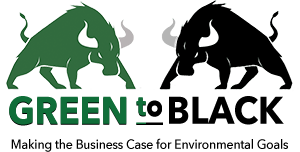“Dusk or Dawn,” the first episode in the 2024 Bloomberg Original series An Optimist’s Guide to the Planet, features Danish actor, film producer, and climate activist Nikolaj Coster-Waldau as he travels to four continents to cover people and companies who are both combating, and innovating ways to capitalize upon, climate change. By showcasing revolutionary new techniques as well as the existing actions of inspiring communities, Coster-Waldau aims to counter climate doomism and inspire optimism for the future. Despite some potential structural flaws in terms of the chronology of presentation, the episode successfully demonstrates that hope should not be lost and that innovation will lead the way to both a greener tomorrow and novel business opportunities.
A popular notion regarding climate change is that the Earth has reached a point of no return and that the problem has grown too large for humanity to handle. To counter this trend of doomism, Coster-Waldau explores multiple new technologies that could potentially play a major role in restoring climate balance. One innovator of such technologies is Twelve, a San Francisco-based company pioneering solutions to tackle both the excess amount of carbon dioxide in our atmosphere and society’s endless desire for petroleum-based plastics. By transforming excess carbon into new consumer products, Twelve has the potential to greatly aid in the battle against global warming while serving as inspiration for entrepreneurs focused on sustainability worldwide. Using carbon dioxide as a limitless free resource, they have created a system that can aid in the climate crisis while being highly profitable, resulting in practically zero material costs and potentially yielding a high gross profit, if they can improve their process and scale up production. Given that the increasing level of carbon dioxide in the atmosphere is by far the largest problem related to global warming, Twelve’s achievement of scale economics could be one way to address the problem. Additionally, because the production of petroleum-based plastics releases over a million tons of carbon dioxide per year, Twelve’s innovative plastic production method could have a substantial impact on carbon emissions from this source.
Another pioneer Coster-Waldau showcases to effectively express his message of hope is Minik Rosing from Greenland. Rosing is developing a way to convert melting glaciers into fertilizer that can be used to feed people worldwide. While this solution does not address Greenland’s problem of increasing temperatures, it demonstrates how humans can adapt to our changing climate and use it effectively for the betterment of the world. Rosing plans to export the silt collected from melting glaciers to countries in Africa, potentially offering a solution to Africa’s long-standing problem of food insecurity.
In addition to the exploration of companies like Twelve and problem-solvers like Rosing, Coster-Waldau and his team highlights scientists creating products like carbon-neutral jet fuel and protective strategies such as using human-engineered clouds to prevent the lethal warming of coral reefs. All in all, they do a great job exploring how a wide variety of groups and individuals are bolstering the fight against climate change and showing that hope is still alive. They end the episode, however, with what is arguably the least revolutionary and most intimidating example. The final segment takes place in Kamikatsu, a sustainable Japanese community that goes to great lengths to reduce its environmental footprint. It features Osamu Nakamura, a resident of the village. Coster-Waldau learns about how community members spend extensive amounts of time sorting their waste for proper recycling and visits Nakamura’s house, where he collects his own water and uses minimal electricity. While this focus on the Kamikatsu community and Nakamura shows the extent to which an impressive few people go to help the climate, placing this segment at the end could potentially daunt viewers. The majority of people in developed societies are content with their consumerist lifestyles and may be opposed to living like the people of Kamikatsu. Ending the documentary with the most extreme example of net-zero living suggests that this way of life is what people need to strive for in order to make a difference, potentially discouraging an interest in sustainability among less ascetic viewers.
Coster-Waldau successfully addresses the climate doomism outlook and effectively conveys his message that people should maintain optimism for the future. He demonstrates that modern technologies and businesses can contribute to creating a greener tomorrow with relevant examples. He shows viewers that it is not too late for humanity to rectify our mistakes, making “Dusk or Dawn” a compelling episode with which to launch the larger series.

